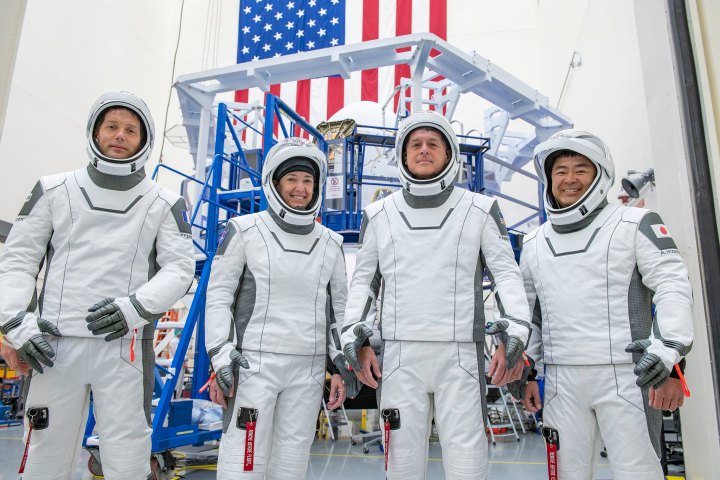This week, NASA and SpaceX will once again be working together to launch four astronauts on a journey to the International Space Station. NASA will be livestreaming the event, so you can follow along with all the action from home, and we’ve got the details on how to watch.
What to expect from the launch

This will be the second operational flight of the Crew Dragon capsule, following the historic first test flight and first operational mission last year. The craft will be launched using a Falcon 9 rocket from Launch Complex 39A at NASA’s Kennedy Space Center in Florida.
On board the Dragon will be four new astronauts to join the crew of the ISS, including NASA astronauts Shane Kimbrough and Megan McArthur, plus Japan Aerospace Exploration Agency astronaut Akihiko Hoshide, and European Space Agency astronaut Thomas Pesquet. They will join the ISS Expedition 65 for the next six months.
How to watch the launch
NASA and SpaceX will be livestreaming the launch, with coverage running through launch preparations, covering the launch itself, and continuous coverage of the journey until the astronauts arrive at the ISS. There will also be a livestream of the craft docking with the ISS and the astronauts being welcomed onto the space station.
To watch the launch, you can either head to the NASA TV website or use the video player embedded at the top of this page.
The launch was originally slated for Thursday, but expected adverse weather has prompted NASA and SpaceX to move it to Friday, April 23. The target time for launch is now 5:49 a.m ET (2:49 a.m. PT). Launch coverage will begin at 1:30 a.m. ET (10:30 p.m. PT Thursday).
The astronauts will travel to the space station through Friday and are scheduled to arrive at the ISS early Saturday morning.
Launch Update 🚀 @NASA and @SpaceX now are targeting Friday, April 23 at 5:49 a.m. ET for the launch of the Crew-2 mission to the @Space_Station due to unfavorable weather conditions along the flight path on Thursday.
Learn more: https://t.co/GSBum6JjfN pic.twitter.com/ylfQx0u2qT
— NASA Commercial Crew (@Commercial_Crew) April 21, 2021



